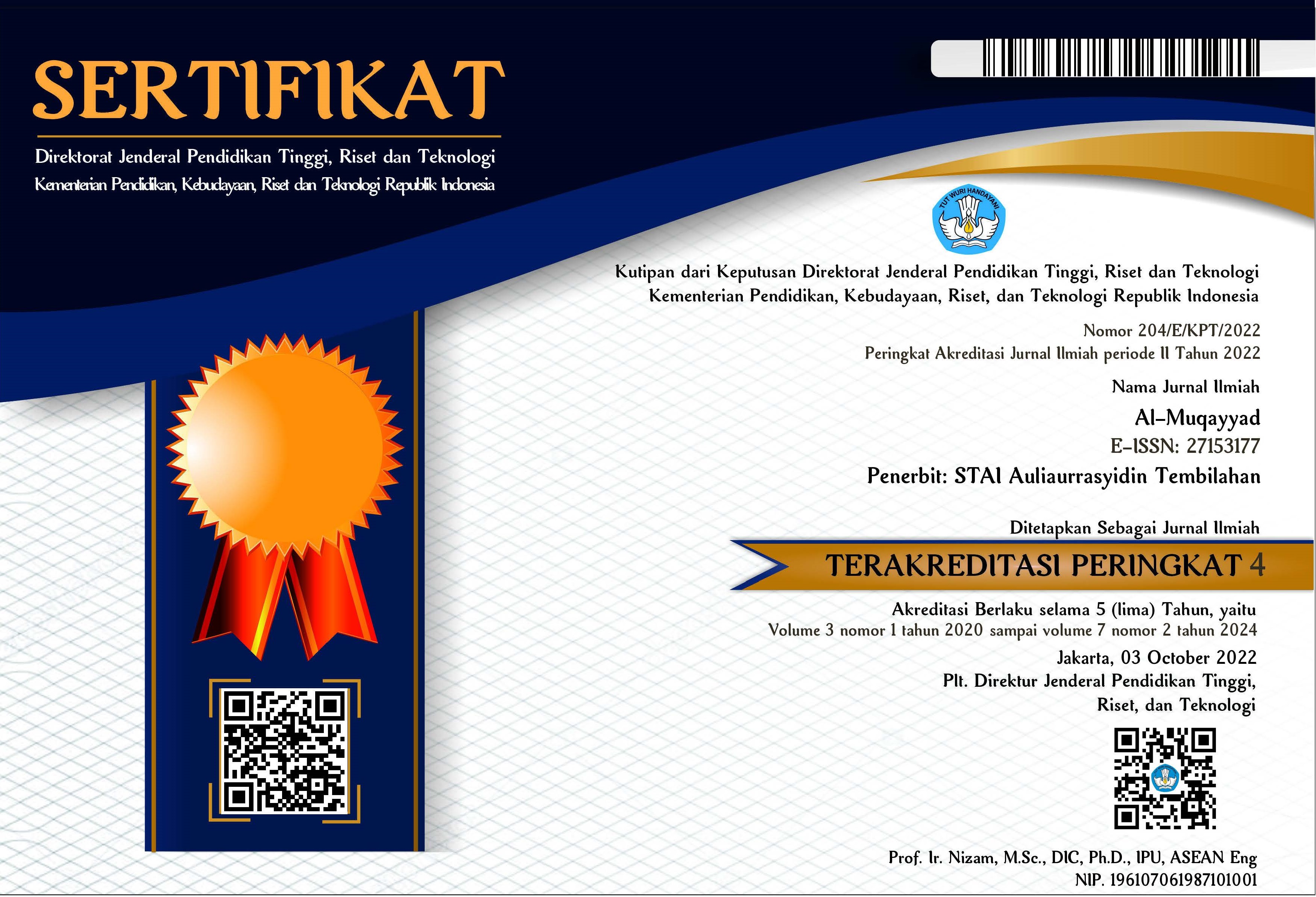Strategi Bank Syariah Indonesia Meningkatkan Inklusi Keuangan
DOI:
https://doi.org/10.46963/jam.v6i2.1370Keywords:
BSI Mobile, Financial Inclusion, Bank Syariah IndonesiaAbstract
This research is motivated by the efforts made by Bank Syariah Indonesia in participating in increasing financial inclusion in Indonesia. The development of financial inclusion in Indonesia has been slow due to the low financial literacy of the community. Therefore, researchers sought to conduct this research with the aim of describing the form of efforts made by Bank Syariah Indonesia in encouraging financial inclusion in Indonesia. This research was conducted in Malang City, especially at BSI KC Malang Soetta and BSI KC Malang Sutoyo using qualitative research methods and case study research types. The results obtained by the researcher are BSI KC Malang Soetta and BSI KC Malang Sutoyo using BSI Mobile to facilitate customers in accessing remote financial services. In introducing programs and services on BSI Mobile, BSI socialised BSI Mobile by holding a Mata Najwa On Stage event spearheaded by renowned journalist Najwa Shihab. The socialisation event was held at the UMM Dome on Wednesday, 12 July 2023.
Downloads
References
Agustina, Dinda Ayu, and Diah Krisnaningsih. 2023. “Pengaruh Penggunaan Bsi Mobile Terhadap Kepuasan.” 6.
Angga Bratadharma. 2023. “BSI Gencarkan Literasi Dan Inklusi Keuangan Syariah Di Kalangan Anak Muda.” metrotvnews.com. https://www.metrotvnews.com/read/b1oC8ZDZ-bsi-gencarkan-literasi-dan-inklusi-keuangan-syariah-di-kalangan-anak-muda (November 10, 2023).
Arisandi, Debby, Didip Diandra, Shi Badio, and Muhammad Juliansyah. 2021. “Kinerja Bank Syariah Indonesia Tahun 2021 Dengan Pendekatan Islamicity Performance Index Sumber : Statistik Perbankan Syariah Dan Otoritas Jasa Keuangan 2020.”
Djakfar, Inayatillah, Isnaliana Isnaliana, and Yossie Kenanga Putri. 2021. “Peran Bank Syariah Mandiri Dalam Mengembangkan Wisata Halal.” El Dinar 9(1): 77–93.
Galvan Yudistira. 2023. “BSI Gencarkan Literasi Dan Inklusi Keuangan Syariah Di Kalangan Anak Muda.” BSI MASLAHAT. https://www.bsimaslahat.org/blog/bsi-gencarkan-literasi-dan-inklusi-keuangan-syariah-di-kalangan-anak-muda/ (November 1, 2023).
Hidayah, Astika Nurul, and Ika Ariani Kartini. 2016. “Peranan Bank Syarah Dalam Sosialisasi Dan Edukasi Masyarakat Tentang Kemanfaatan Produk Dan Jasa Perbankan Syariah.” Cosmic Journal of Law 16(1): 74–86.
Hukum, Jurnal, and Ekonomi Syariah. 2022. “Prosedur Hukum Peralihan Nasabah Pasca Berdirinya Bank Syariah Indonesia.” Jurnal Hukum Ekonomi Syariah 06(1).
Lova, Evi Fajriantina. 2021. “Financial Technology Peer To Peer Lending Syariah: Sebuah Perbandingan Dan Analisis.” Jeblr 1(2): 29–41. https://jurnal.unej.ac.id/index.php/JEBLR/article/download/27732/10388.
Marella Vanni, Kartika, and Viki Safirotu Nadan. “Efektivitas Strategi Pemasaran Digital Banking Bank Syariah Di Indonesia.” : 237–48.
Muzdalipah, Muzdalipah Musda, and Mahmudi Mahmudi. 2023. “Digitalisasi Perbankan Syariah : Penggunaan Bsi Mobile Di Era Generasi Milenial Di Kota Yogyakarta.” Equilibrium : Jurnal Ilmiah Ekonomi, Manajemen dan Akuntansi 12(1): 12.
Nugroho, I Y, and M Pudjihardjo. 2022. “Pengaruh Persepsi Kemudahan, Persepsi Kegunaan, Ketersediaan Fitur Dan Literasi Keuangan Terhadap Preferensi Penggunaan BSI Mobile.” Islamic Economics and finance in Focus 1(2): 135–47. https://ieff.ub.ac.id/index.php/ieff/article/view/22.
OJK. 2022. “Siaran Pers Survei Nasional Literasi Dan Inklusi Keuangan Tahun 2022.” Otoritas Jasa Keuangan (November): 10–12.
Otoritas Jasa Keuangan. 2021. “Strategi Nasional Literasi Keuangan Indonesia (SNLKI) 2021 - 2025.” Ojk.Go.Id: 1–130. https://www.ojk.go.id/id/berita-dan-kegiatan/publikasi/Pages/Strategi-Nasional-Literasi-Keuangan-Indonesia-2021-2025.aspx.
———. 2022. “Sp 67/Dhms/Ojk/x/2022.” (26): 2–4.
Pramaswara, Muhammad Alifanda et al. 2023. “Jdess 02.01.2023.” 2(1): 205–21.
Putri, Lucky Marcelina Kartika, Muhammad Noor Maulana Ilham, and Kharis Fadlullah Hana. 2022. “Analisis Minat Masyarakat Terhadap Fintech Syariah Ditinjau Dari Perspektif Hukum Ekonomi Syariah.” Al-’Aqdu: Journal of Islamic Economics Law 2(2): 106.
Rohman, Adi Nur. 2023. “Urgensi Pengaturan Fintech Lending Syariah Di Indonesia: Analisis Perlindungan Hukum Bagi Pengguna Layanan.” Jurnal Legislasi Indonesia 20(1): 16.
Samsudin, Acep et al. 2023. “Strategi Meningkatkan Kualitas Pelayanan Melalui BSI Mobile Pada Bank Syariah Indonesia.” El-Mal: Jurnal Kajian Ekonomi & Bisnis Islam 4(4): 1163–70.
Sihombing, Roswant. 2021. “Analisis Pengaruh Financial Technology.” Fakultas Ekonomi Universitas Brawijaya 1(1): 1–15.
Sugiyono. 2015. Metode Penelitian Kuantitatif, Kualitatif, Dan R&D. Bandung: Alfabeta.
Syariah, D A N Pelayanan. 2022. “Ieff 01.04.2022.” 1(4): 345–59.
UMM, Humas. 2023. “BSI Gencarkan Literasi Dan Inklusi Keuangan Syariah Di Kalangan Anak Muda.” umm.ac.id. https://www.umm.ac.id/id/arsip-koran/infobanknews/bsi-gencarkan-literasi-dan-inklusi-keuangan-syariah-di-kalangan-anak-muda.html.
Wahyuningsih, Sri, Sutriningsih Sutriningsih, and Endang Syta Triana. 2023. “Pengaruh Financial Literacy Terhadap Minat Masyarakat Menggunakan Produk Perbankan PT. BPR Araya Arta.” EKSISBANK: Ekonomi Syariah dan Bisnis Perbankan 7(1): 111–22.
Widiya, Tifani Nurmala et al. “Program Tifani Nurmala Widiya.” 96(2): 93–102.
Winarsih, Tri. 2022. “Memaknai Perkembangan Fintech Syariah Melalui Sistem Akad Syariah.” POPULER: Jurnal Penelitian Mahasiswa 1(3): 130–42.
Downloads
Published
Issue
Section
License
Copyright (c) 2023 Novi Tri Oktavia

This work is licensed under a Creative Commons Attribution-ShareAlike 4.0 International License.
Authors who publish with this journal agree to the following terms:
1. Copyright on any article is retained by the author(s).
2. The author grants the journal, right of first publication with the work simultaneously licensed under a Creative Commons Attribution shareAlike 4.0 International License that allows others to share the work with an acknowledgment of the work’s authorship and initial publication in this journal.
3. Authors are able to enter into separate, additional contractual arrangements for the non-exclusive distribution of the journal’s published version of the work (e.g., post it to an institutional repository or publish it in a book), with an acknowledgment of its initial publication in this journal.
4. Authors are permitted and encouraged to post their work online (e.g., in institutional repositories or on their website) prior to and during the submission process, as it can lead to productive exchanges, as well as earlier and greater citation of published work.
5. The article and any associated published material is distributed under the Creative Commons Attribution-ShareAlike 4.0 International License





2.png)



